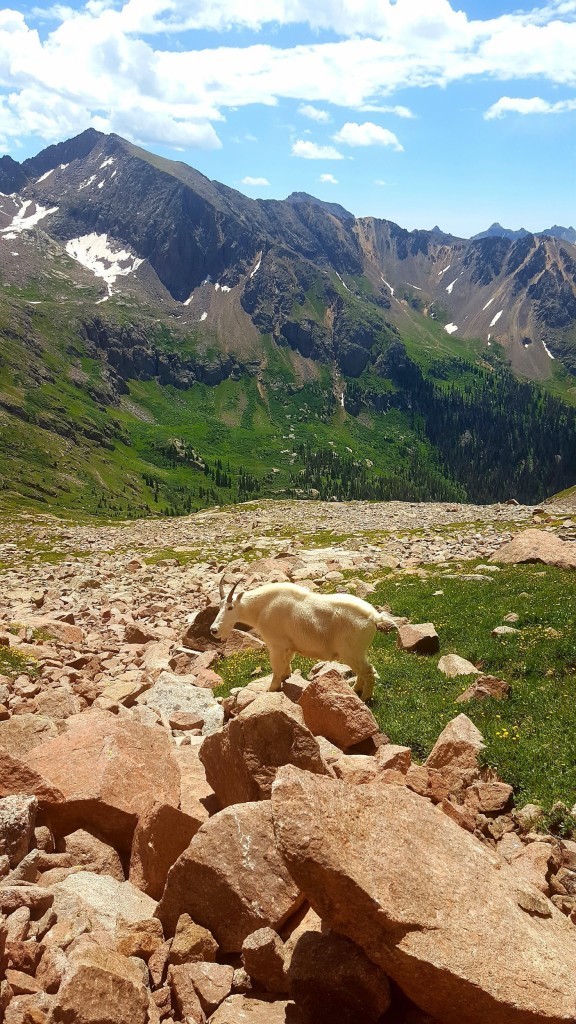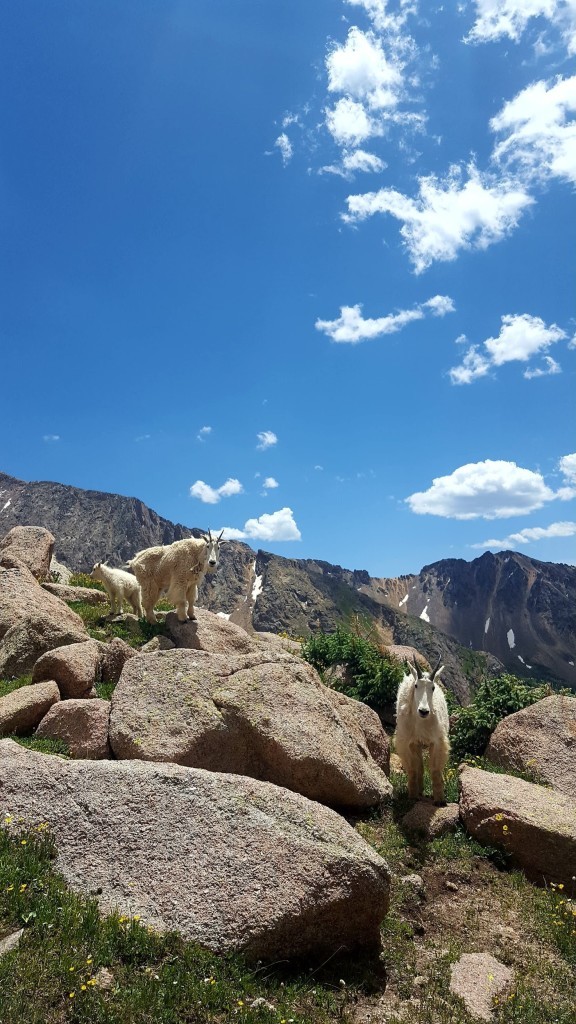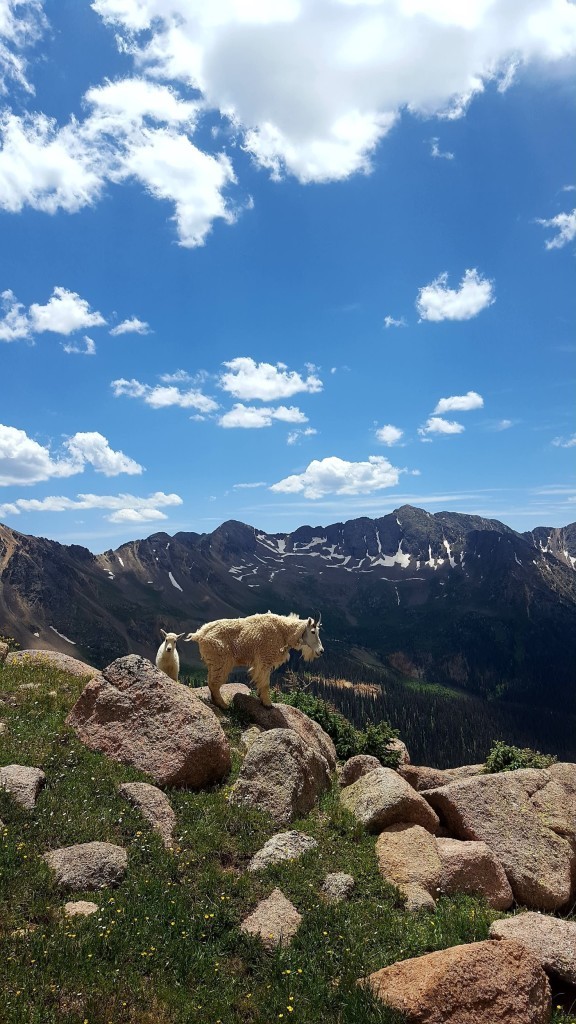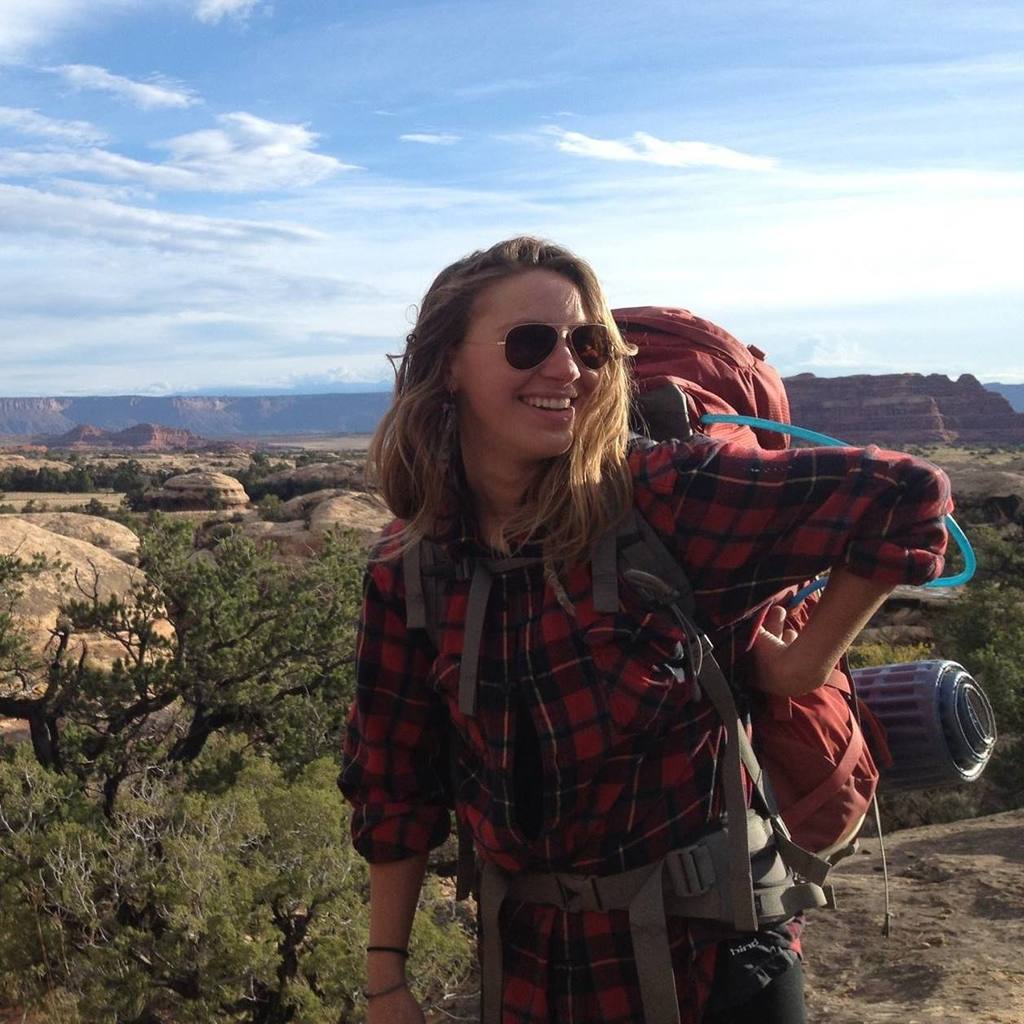Enter the Chicago Basin in the Weminuche Wilderness and delve deep into the home of many Colorado inhabitants. Black bear, mule deer, elk and mountain lions populate the lower elevations, while high in the alpine one can come across pika, marmots, and the Mt. Eolus trail crew. Above treeline, we spend most of our days rearranging rocks to create more sustainable trails for the tundra that surround them and the hikers who enjoy it.
Along the approach to the summit, strange sights cling to pine branches, wispy ornaments of shedding fur evidencing mountain goats in the basin. Though native to Western Canada, Alaska, Montana and Wyoming, goat introduction occurred throughout the western United States during the 1900s. Colorado was no exception; mountain goats were first introduced to Mt. Evans in 1947 for sport purposes, and populations now exist throughout the Collegiate Range and in the San Juans. Basis for introduction came from numerous anecdotal evidence from observations taken in the 1800s by various taxonomists and naturalists, claiming the species native claim in the region. However, a recent study funded by the National Park Service reported that most of those early scientists, though well-intended, actually mistook antelope for goats in their observations. Despite this discrepancy, the species continue to proliferate in Colorado, sharing ranges previously dominated by bighorn sheep.
With their coal-black eyes and fur as white as the receding snow, it’s easy to see why enthusiasts tend not to mind nonnative goat herds. They seem awfully at home among the talus and tundra above treeline. Unfortunately, such introduced species affect native ecosystems, just as any other visitors do. Mountain goats enjoy eating the many wildflowers and mosses that proliferate in their new habitats, and their salt deprivation makes them social in regard to interactions with humans. In places frequented by both, goats are known to dig into latrines and investigate campsites in order to obtain the salt their herbivorous diet deprives them of.
In some areas, the disturbance goats cause drastically lessens plant populations. Their consumption of wildflowers and tilling activities inhibit seeds coming to fruition. To help not add to this, when enjoying the wilderness, visitors may take care to follow Leave-No-Trace principles and relieve themselves on a rock or via wag bag to lessen incentive for goat disturbance. Both humans and goats are visitors to the basin. We’re privileged to enjoy such a remarkable place, and should take care to aid in its preservation.






